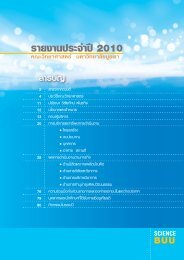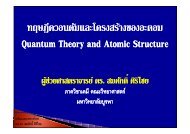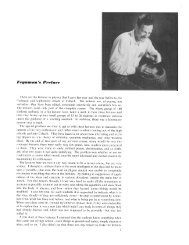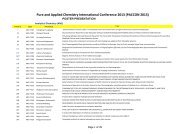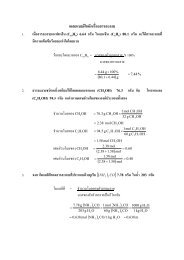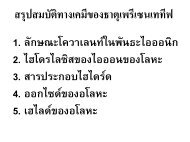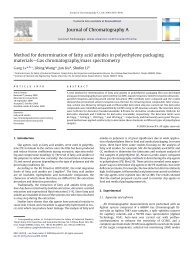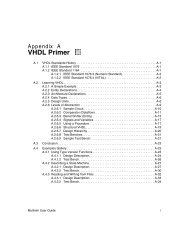USER MANUAL SWAN Cycle III version 40.72A
USER MANUAL SWAN Cycle III version 40.72A
USER MANUAL SWAN Cycle III version 40.72A
You also want an ePaper? Increase the reach of your titles
YUMPU automatically turns print PDFs into web optimized ePapers that Google loves.
Description of commands 49<br />
CRAY<br />
WKSTAT<br />
FREE<br />
[xgc]<br />
[ygc]<br />
input will be read from file created by the CRAY <strong>version</strong> of WAM.<br />
input will be read from file created by the WORKSTATION <strong>version</strong> of WAM.<br />
the user indicates that the WAM files can be read with free format (these files<br />
are not generated standard by WAM!).<br />
if <strong>SWAN</strong> is used with Cartesian coordinates:<br />
longitude of south-west corner of <strong>SWAN</strong> computational grid (in degrees); if the<br />
south-west corner of the nest in the WAM computation is on land this value is<br />
required.<br />
If <strong>SWAN</strong> is used with spherical coordinates then [xgc] is ignored by <strong>SWAN</strong>.<br />
Default: the location of the first spectrum encountered in the nest file.<br />
if <strong>SWAN</strong> is used with Cartesian coordinates:<br />
longitude of south-west corner of <strong>SWAN</strong> computational grid (in degrees); if the<br />
south-west corner of the nest in the WAM computation is on land this value is<br />
required.<br />
If <strong>SWAN</strong> is used with spherical coordinates then [ygc] is ignored by <strong>SWAN</strong>.<br />
Default: the location of the first spectrum encountered in the nest file.<br />
| -> CLOSed |<br />
BOUNdnest3 WW<strong>III</strong> ’fname’ < > [xgc] [ygc]<br />
| OPEN |<br />
CANNOT BE USED IN CASE OF UNSTRUCTURED GRIDS.<br />
With this optional command (not fully tested) a nested <strong>SWAN</strong> run can be carried out<br />
with the boundary conditions obtained from a coarse grid WAVEWATCH <strong>III</strong> run. For this<br />
nested <strong>SWAN</strong> run the user has to give the CGRID command to define the computational<br />
grid before this BOUNDNEST3 command. The computational grid for <strong>SWAN</strong> in geographic<br />
space is the area bounded by the WAVEWATCH <strong>III</strong> nest (WAVEWATCH <strong>III</strong> boundary<br />
points of the nest). This implies that the boundaries of the WAVEWATCH <strong>III</strong> nest and<br />
the boundaries of the <strong>SWAN</strong> computational area should be (nearly) identical (see below).<br />
The spectral frequencies and directions of the coarse grid run do not have to coincide with<br />
the frequencies and directions used in the nested <strong>SWAN</strong> run (as defined in the CGRID<br />
command); <strong>SWAN</strong> will interpolate to these frequencies and directions in the nested run<br />
(see Section 2.6.3).<br />
The output files of WAVEWATCH <strong>III</strong> (<strong>version</strong> 1.18 as distributed by NOAA) have to be<br />
created with the post-processor of WAVEWATCH <strong>III</strong> as output transfer files with<br />
WW_3 OUTP (output type 1 sub type 3)<br />
at the locations along the nest boundary (i.e. computational grid points in WAVE-<br />
WATCH <strong>III</strong>). These locations are equal to the corner points of the <strong>SWAN</strong> nested grid





